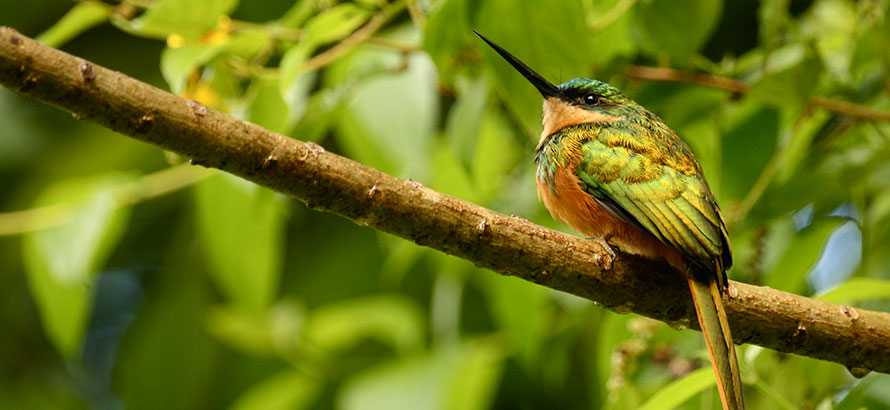
The Rufous-tailed Jacamar (Galbula ruficauda) is an evolutionary-distinct bird that declines in agriculture but thrives in tropical rainforest. Photo by Daniel Karp, ESPM Postdoctoral Researcher.
We have long known that when forests are transformed into agricultural lands, the evolutionary diversity of wildlife is affected. A new study by ESPM postdoctoral researchers Daniel Karp and Leithen M'gonigle, and professor Claire Kremen, highlights just how dramatic those effects can be.
In conjunction with researchers at Stanford University, Karp and Kremen conducted research on nearly 500 species of birds in Costa Rica in three types of habitat, and calculated the birds’ phylogenetic diversity, a measure of the evolutionary history embodied in wildlife. They found that the phylogenetic diversity of the birds fared worst in habitats characterized by intensive farmlands consisting of single crops. Such intensive monocultures supported 900 million fewer years of evolutionary history, on average, compared with untouched forest reserves.
The researchers did, however, find a middle ground in diversified agriculture, or farmlands with multiple crops adjoined by small patches of forest. Such landscapes supported on average 600 million more years of evolutionary history than the single crop farms. This “shows how important it is for biodiversity conservation to surround protected areas with productive forms of diversified agriculture, whenever possible," said Kremen.
